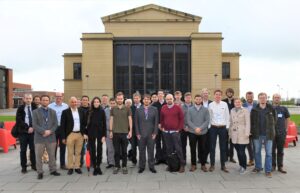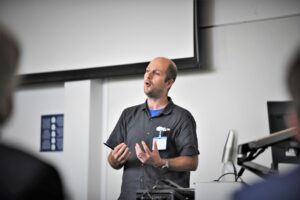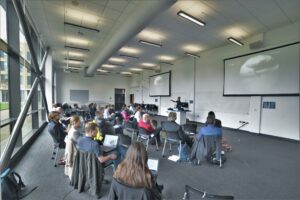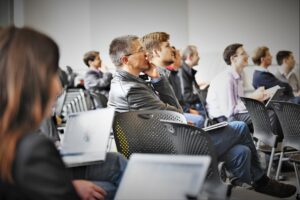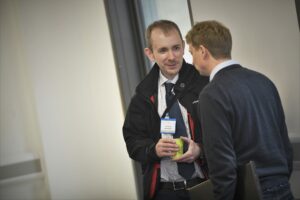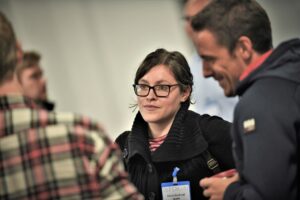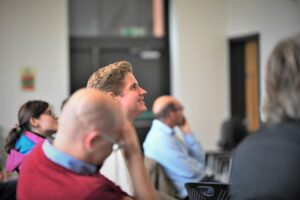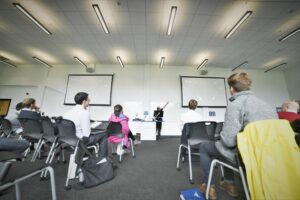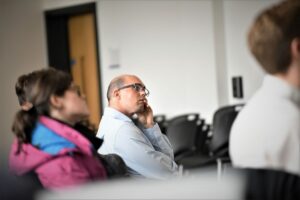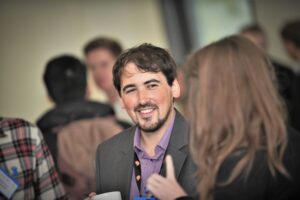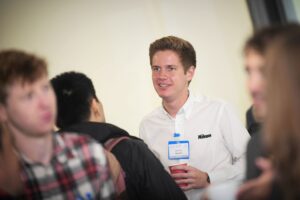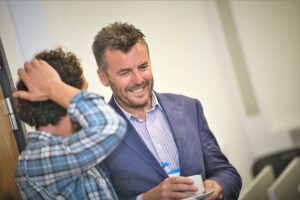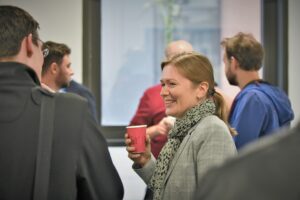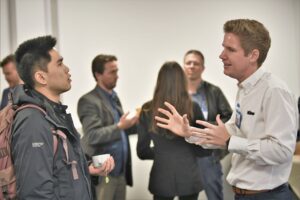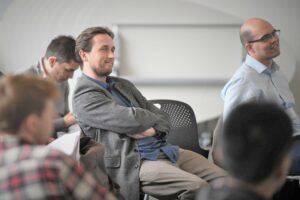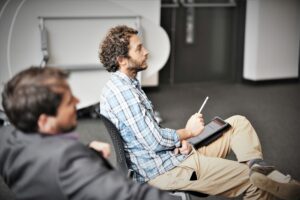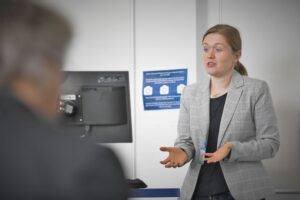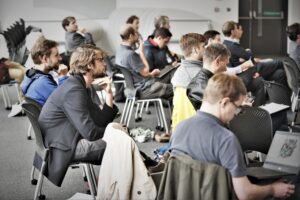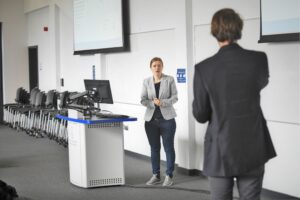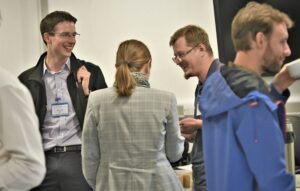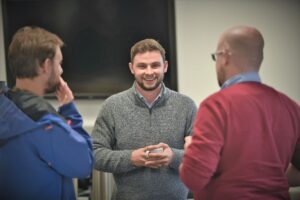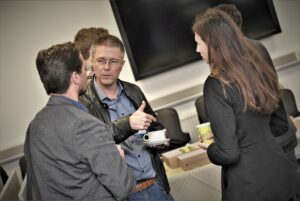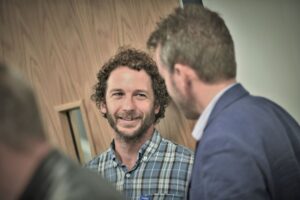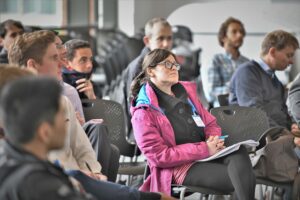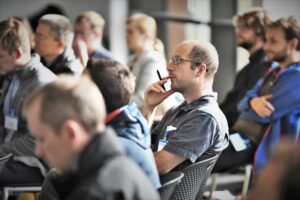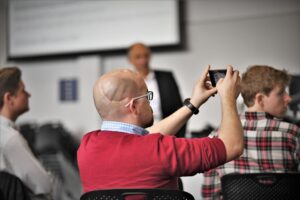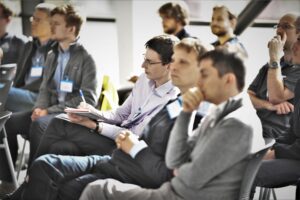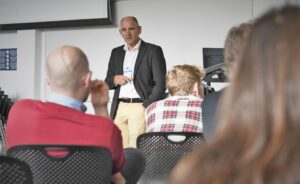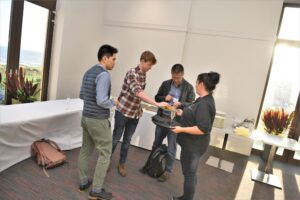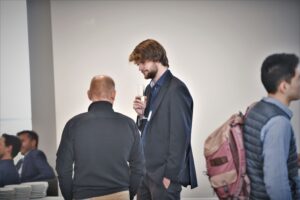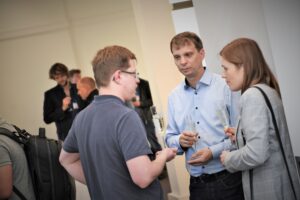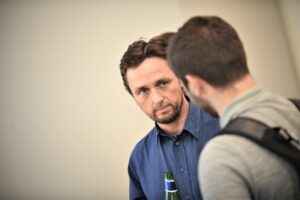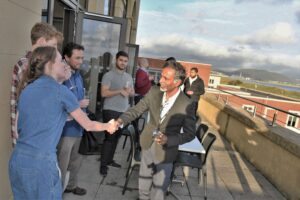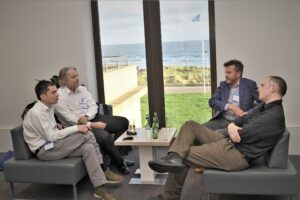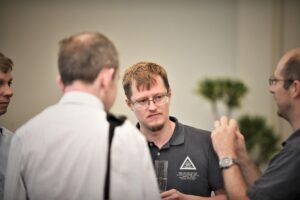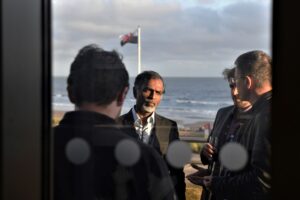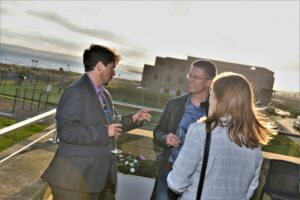Over the four days we had over 40 attendees representing academia, research centres, start up companies and large multinational corporations. We have received positive feedback for both the fully-booked training and workshop sections of the event and include a snapshot of this below.
Here are some responses to “What one thing have you liked or has benefitted you the most?”
- Discussion with other attendees about research, this has been a very relevant networking opportunity allowing me to make contacts and discuss my work with others; it’s good to see I’m not the only doing this!
- Discovering more about the power of image based modelling and how I can use this technique moving forward.
- The high level of discussion held by the attendants, was very useful to discuss concepts in detail with researchers and industrial members who understood.
- The workshops were incredibly useful and step by step guidance helped me to gain a much better understanding. The talks were also great, hearing how other areas use this technology.
Keynote Speakers
Prof Anton du Plessis, Stellenbosch CT facility
Image-based simulation of lattice structures produced by laser powder bed fusion
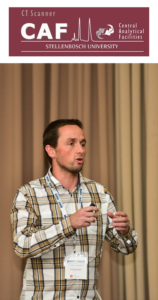
Prof Anton du Plessis is based in Stellenbosch, South Africa. He has been developing and managing the Stellenbosch CT facility since 2012 – an open access laboratory involved in a wide variety of industrial and research work. His research is focused on additive manufacturing, X-ray tomography and biomimicry. These concepts all come together beautifully in a recent review article: “Beautiful and functional: a review of biomimicry in additive manufacturing”, https://doi.org/10.1016/j.addma.2019.03.033. In this talk he will discuss the use of image-based simulations in the context of additively manufactured lattice structures (cellular structures).
Tristan Lowe, Manchester X-ray Imaging Facility
Measuring confidence levels in X-ray CT
 Dr Tristan Lowe is a Senior Experimental Officer (SEO) at the Manchester X-ray Imaging Facility (MXIF) with over 60 co-authored journal and conference publications.
Dr Tristan Lowe is a Senior Experimental Officer (SEO) at the Manchester X-ray Imaging Facility (MXIF) with over 60 co-authored journal and conference publications.
His current research interest is focused in two areas:
– The optimisation of laboratory X-ray CT instruments for obtaining the best spatial resolution and therefore determining the limits of detectability and measurability of known objects. This includes using signal processing to numerically quantify resolution quality.
– In-situ deformation studies using X-ray CT. In this area his expertise is in the optimisation of the imaging conditions of the X-ray CT instrument to the specific deformation rig design. Since 2015 he has been involved in the development of open frame deformation rigs with DEBEN UK, development of fatigue rigs for composite structures and product testing of the Hysitron IntraSpect 360 indentation rig.
He has also developed a number of X-ray CT courses at the University of Manchester that have been attended by users across the UK and Europe.
Additional Speakers
- Prof Neil Bourne, University of Manchester
- Dr Nick Brierley, The MTC
- Dr Tom Etheridge, Airbus Defence and Space
- Dimitrios Fakis, Brunel University London
- Dr Peter Falkingham, Liverpool John Moores University
- Dr Johannes Fieres, Volume Graphics
- Dr David Harman, Synopsys Inc.
- James Le Houx, University of Southampton
- Dr Olly King, Diamond Light Source
- Prof Stepan Lomov, KU Leuven
- Philippe Martinuzzi, EDF Energy Research and Development
- Dr Triestino Minniti, UKAEA
- Chris Price, Nikon Metrology
- Dr Razvan Sencu, University of Manchester
- Dr Oxana Shishkina, Siemens Industry Software NV
- Dr Andreas Wiegmann, Math2Market
- Dipl.-Geophys. Gerhard Zacher, Baker Hughes, a GE company
Programme
The majority of the presentations delivered during the workshop (days 3-4) have kindly been made available to download by the authors. Navigate below to the day and session on which the presentation was given and click on the title to download.
Mon 9 Sep 2019
- 9:30 – Registration & Coffee
- 10:00 – Session 1
Random Finite Element Method (RFEM)
– “Step-0: The Lecture“
– “Step-1: The Theory“
– “Step-2: The Proof of Principle“
– “Step-3: Collecting the Variability Data“
– “Step-4: Calibrating the Random Field“
– “Hands-on Tutorial“
Lee Margetts, ParaFEM - 12:30 – Lunch
- 13:30 – Session 2
Meshing techniques for Global DVC analysis
– Tutorial data
Loic Courtois, 3Dmagination - 14:45 – Coffee
- 15:15 – Session 3
Meshing techniques for Global DVC analysis cont. - 17:00 – End
Tue 10 Sep 2019
- 9:00 – Session 4
From CT image to simulation with VGSTUDIO MAX:
– Image preprocessing
Johannes Fieres and Alessandro Mangione, Volume Graphics - 10:30 – Coffee
- 11:00 – Session 5
From CT image to simulation with VGSTUDIO MAX:
– Image preprocessing cont. - 12:30 – Lunch
- 13:30 – Session 6
“Examples of image-based simulations in different applications”
Anton du Plessis, Stellenbosch University
From CT image to simulation with VGSTUDIO MAX: –
Image based simulation
Johannes Fieres and Alessandro Mangione, Volume Graphics - 14:45 – Coffee
- 15:15 – Session 7
From CT image to simulation with VGSTUDIO MAX: –
Image based simulation cont. - 17:00 – End
Wed 11 Sep 2019
- 9:30 – Registration & Coffee
- 10:30 – Welcome
- 10:45 – Keynote 1, Chair: Llion Evans, Swansea University
Anton du Plessis, Stellenbosch CT Facility
“Image-based simulation of lattice structures produced by laser powder bed fusion”
“X-Ray tomography for advancement of laser powder bed fusion additive manufacturing” – ToScA 2019 - 11:30 – Session 1, “Developments in CT imaging”, Chair: Loic Courtois, 3Dmagination
Gerhard Zacher, Baker Hughes, a GE company
“Advanced X-ray Computed Tomography in Additive Manufacturing”
Nick Brierley, The MTC
“Mapping Performance of CT”
Chris Price, Nikon Metrology
“Automation of CT Imaging“ - 12:45 – Lunch
- 13:45 – Session 2, “CT image processing”, Chair: Alisa Stratulat, Carl Zeiss Microscopy
Triestino Minniti, UKAEA
“Neutron tomography and NeuTomPy toolbox: a Python package for neural network based tomographic reconstruction“
Olly King, Diamond Light Source
“An introduction to SuRVoS Workbench – speeding up volume segmentation using super-regions and machine learning“
Matt Howard, Synopsys Simpleware Group
“Image-based meshing and model generation with the Simpleware software“ - 15:00 – Coffee
- 15:30 – Session 3, “Image-based simulation applications #1″, Chair: James Le Houx, University of Southampton
Peter Falkingham, Liverpool John Moores University
“Bi-planar X-ray imaging and HPC simulation of dinosaur footprint formation“
Stepan Lomov, KU Leuven
“Micromechanics of Fibrous Composites and Permeability of Fibrous Media Based on Micro-CT Images“
Neil Bourne, University of Manchester
“The Exposome of Structures“ - 17:00 – End
- 18:15 – Networking Reception
- 21:00 – Taxis
Thu 12 Sep 2019
- 9:30 – Keynote 2, Chair: Nick Brierley, The MTC
Tristan Lowe, Manchester X-ray Imaging Facility
“Measuring confidence levels in X-ray CT” - 10:15 – Session 4a, “Image-based simulation software”, Chair: Nick Brierley, The MTC
Andreas Wiegmann, Math2Market
“Image Based Modelling and Direct Numerical Simulations with GeoDict, the Digital Material Laboratory“ - 10:40 – Coffee
- 11:10 – Session 4b, “Image-based simulation software”, Chair: Bethany Keenan, Cardiff University
Oxana Shishkina, Siemens Industry Software NV
“Simcenter 3D Virtual Material Characterization ToolKit for realistic composite materials modelling using micro-CT-based voxel approach“
James Le Houx, University of Southampton
“OPEN source IMage based PArallelisable Liner Algebra solver“
Johannes Fieres, Volume Graphics
“Simulating the Effects of Manufacturing Defects Based on CT Images“ - 12:25 – Lunch
- 13:25 – Session 5, “Image-based simulation applications #2”, Chair: Triestino Minniti, UKAEA
Philippe Martinuzzi, EDF Energy Research and Development
“Experience open simulation with the salome_meca platform“
Razvan Sencu, University of Manchester
“Modelling of composite materials’ damage and fracture mechanics leveraging in-situ X-ray Computed Tomography datasets”
Dimitris Fakis, Brunel University London
“Full dielectric characterisation of fibre-reinforced composite materials with the use of micro-CT“
Tom Etheridge, Airbus Defence and Space
“An IBFEM process for virtual testing of AM satellite components” - 15:05 – Wrap up
- 15:20 – Close
